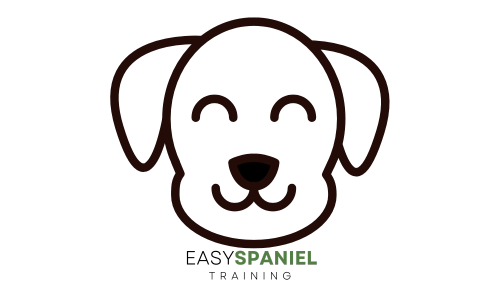Cocker Spaniels, with their endearing eyes and luxurious coats, have captured hearts worldwide. But have you ever wondered how these delightful dogs came to possess such distinct characteristics?
It’s a tale that spans centuries, deeply rooted in a rich history that has meticulously shaped today’s Cocker spaniel breed standards.
This journey, from humble working gundogs in England to their present status as cherished companions, is not just about physical traits but a story of passion, precision, and preservation.
The Fascinating Journey of Cocker Spaniel Breed Standards
The breed standards we know today are the result of careful observation, selective breeding, and detailed record-keeping.
These standards, focusing on size, coat colour, and temperament, have evolved significantly, mirroring the breed’s transition from a skilled hunter to a beloved family pet.
Each standard revision reflects a deep understanding of the breed’s needs and a commitment to its well-being.

A Storied History: The Origins of Cocker Spaniels
Tracing back to the 14th century, the Cocker spaniel began its journey as a breed skilled in hunting woodcock, hence its name.
This period marked the genesis of a breed that would evolve into a symbol of elegance and companionship.
The breed’s refinement in England set the stage for the diverse and rich lineage we see today.
Divergence into American and English Varieties
In the early 1900s, a fascinating divergence occurred, giving rise to the American and English Cocker spaniel.
Each variety, with its unique attributes, catered to different preferences yet maintained the core essence of the breed.
The American variety, known for its smaller size and rounder head, contrasts with the larger and more defined English variety.
Despite these differences, both types have earned a special place in homes worldwide.
Role of Breed Standards in Preserving Cocker Spaniel Integrity
Breed standards are vital in safeguarding the unique qualities of Cocker spaniels.
They serve as a blueprint for breeders, judges, and enthusiasts, ensuring that the breed remains true to its heritage.
These standards are instrumental in preventing the dilution of the breed’s distinct traits and maintaining its pedigree.
Establishing the Breed Standards: A Late 19th Century Endeavour
The late 19th century saw the formal establishment of breed standards in England.
These standards detailed the ideal size, shape, colour, and temperament, offering guidance for breeders and judges.
The standards have been regularly revised to adapt to changes in the breed, ensuring its health and welfare continue to be a priority.

The Influence of Kennel Clubs in Shaping Breed Standards
Kennel clubs have played a pivotal role in setting and upholding breed standards.
These organizations are not just gatekeepers of breed characteristics; they are educators, promoters of responsible breeding, and guardians of breed health and quality.
Their work ensures the continuation of each breed’s unique heritage.
Evolution of Initial Breed Standards: From Hunting to Companion Dogs
As Cocker spaniels gained popularity as companion animals, their breed standards evolved accordingly.
The focus shifted from hunting traits to characteristics more suited to life as a household pet.
Today, Cocker spaniels are renowned for their intelligence, loyalty, and affectionate nature, traits that make them ideal family members.
Significant Changes in Breed Standards Over Time
Over time, the breed standards for Cocker spaniels have undergone significant changes.
Initially bred for hunting, the breed has adapted to being a beloved family pet, leading to a shift in physical and temperamental traits.
This evolution reflects the breed’s versatility and ability to adapt to changing human lifestyles.

The Influence of Breed Clubs and Breeders in Shaping Modern Standards
Breed clubs and dedicated breeders have been instrumental in shaping the modern Cocker spaniel.
Their commitment to preserving the breed’s characteristics while also considering health and temperament has played a crucial role in developing today’s dog.
Health and Temperament: Key Considerations in Breed Standards
Health and temperament are crucial in shaping breed standards.
A focus on sociability, adaptability, and overall friendliness, coupled with health considerations, ensures that breed standards prioritize the well-being of Cockers.
Navigating Controversies Around Breed Standards
The world of breed standards is not without its controversies.
The debate often centers on the balance between physical traits and the health and functionality of the breed.
This has led to a push for breed standards that prioritize health and welfare over appearance.
Addressing Challenges and Controversies in Breed Standards
The dog breeding community is actively working to address controversies in breed standards.
This involves promoting responsible breeding practices, health testing, and reevaluating breed standards to reflect the dogs’ needs and welfare.
Conclusion: The Ongoing Evolution of Cocker Spaniel Standards
The evolution of Cocker spaniel breed standards is an ongoing journey.
From their origins as hunting dogs to becoming show dogs and beloved companions, the breed has adapted and thrived.
Today, Cocker spaniels stand as a testament to the careful balance between form and function, a balance that continues to evolve with the breed.
What are the main differences between American and English Cocker spaniels?
American Cocker spaniels are generally smaller with a rounder head, while English Cockers are larger with a more defined snout.
Why are breed standards important for Cocker spaniels?
Breed standards ensure the preservation of the breed’s unique traits, maintain its pedigree, and prevent the dilution of its distinctive characteristics.
How have Cocker spaniel breed standards changed over time?
Initially bred for hunting, the standards have evolved to prioritize traits suitable for companion animals, reflecting changes in physical and temperamental attributes.
What role do kennel clubs play in maintaining breed standards?
Kennel clubs establish and maintain breed standards, educate the public, and oversee breed conformation shows, ensuring the health and quality of the breeds.
Are there any controversies regarding Cocker spaniel breed standards?
Yes, there are debates about balancing physical traits with health and functionality, leading to calls for revising breed standards to prioritize well-being.
What efforts are being made to address breed standard controversies?
Breed clubs and breeders are advocating for responsible breeding practices, health testing, and revising standards to reflect the needs and welfare of the breed.




